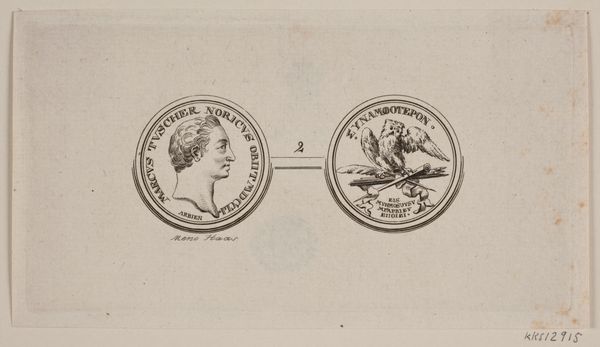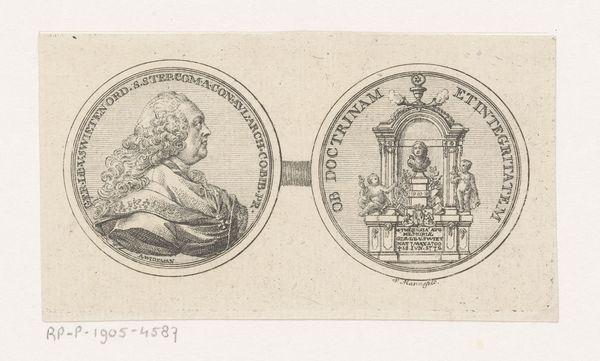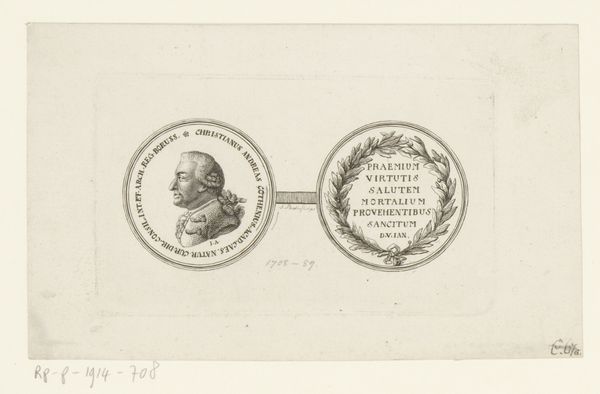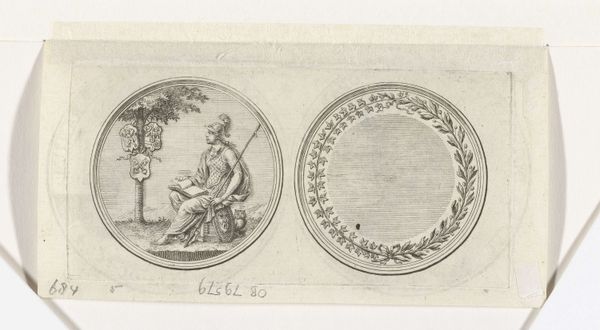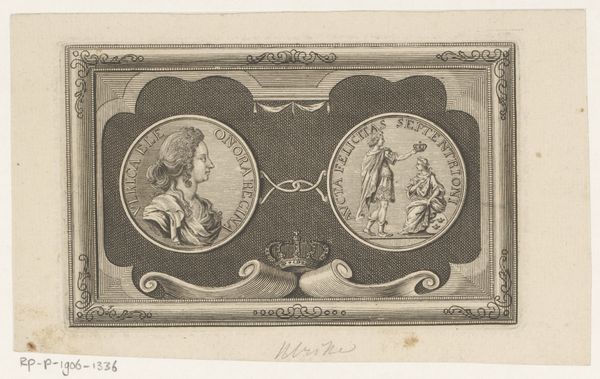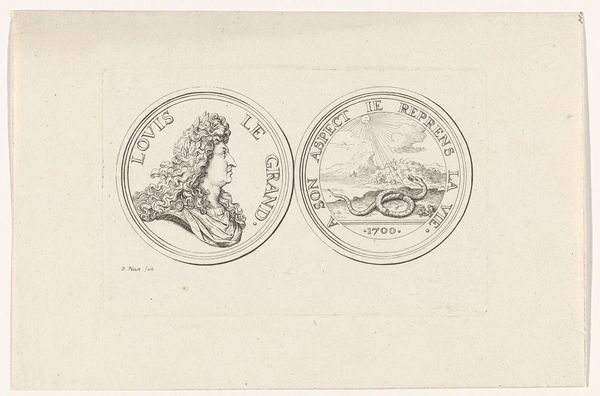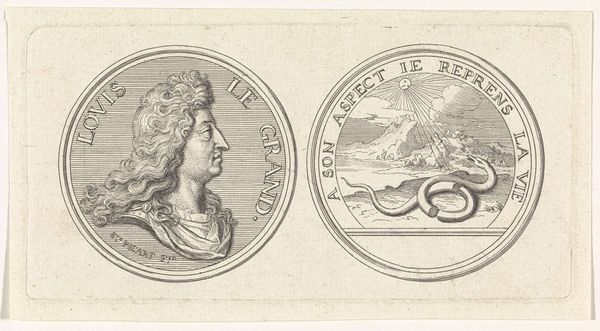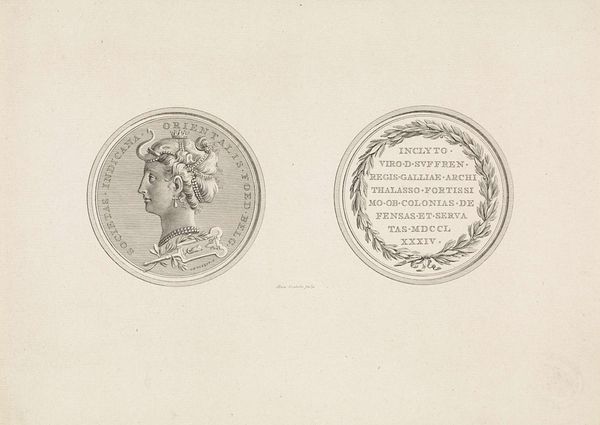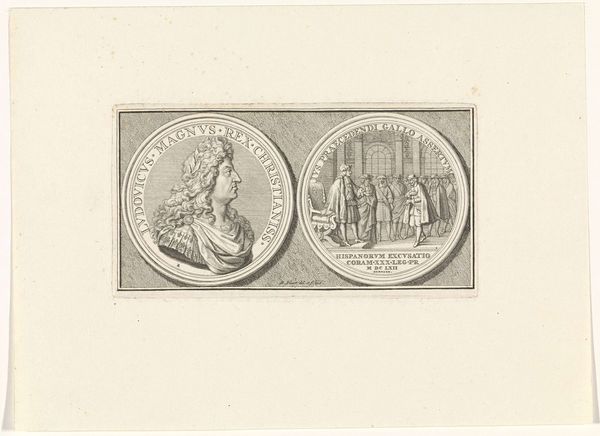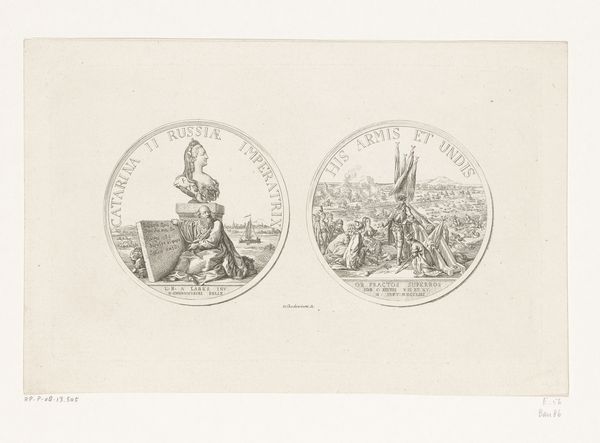
Dimensions: 79 mm (height) x 150 mm (width) (Plademål)
Editor: So, this engraving, "Medaille. Ludvig Holberg" by Meno Haas, made between 1752 and 1833, presents two circular medallions. It’s fascinating how much detail is achieved with simple lines! What stands out to you when you look at this piece? Curator: What immediately grabs my attention is the labor embedded in the production of this print. Think about the engraver, Meno Haas, and the painstaking, repetitive action of incising lines into the metal plate. Consider also the dissemination – these prints would have been relatively accessible, circulating ideas about Holberg and, more broadly, the cultural capital he represented. Is this accessibility something that occurs to you as well? Editor: It is, now that you mention it. The fact that it's a print does imply wider circulation compared to, say, a painted portrait. Does the subject matter - a portrait paired with allegorical figures - tell us anything about the social standing or consumption habits of its intended audience? Curator: Absolutely. This pairing speaks volumes about status and aspirations. The Holberg portrait anchors the medal to a recognizable, celebrated individual, a symbol of Enlightenment ideals, freely available now in print form. Then we need to also think about how the person who had the original gold medal created. The figure representing Utorve’s connection to Roman virtues shows Holberg also wanted to emulate their value in an explicit, lasting way. It connects production – who could afford these items – to personal philosophy in that production process. This piece showcases values and social expectations in the context of the print trade. Editor: I see. The material choices and reproduction methods themselves were active in constructing and communicating meaning about Holberg's identity. Curator: Precisely! Looking at art through the lens of production and materiality reveals so much more than just aesthetic preferences. It provides insights into the broader economic and social structures that shaped artistic creation. Editor: I never really thought about it this way! Considering the "how" and "why" of its creation is just as important, if not more so, than simply what it depicts. Curator: Exactly. And each tells on the other and contributes to the other.
Comments
No comments
Be the first to comment and join the conversation on the ultimate creative platform.
